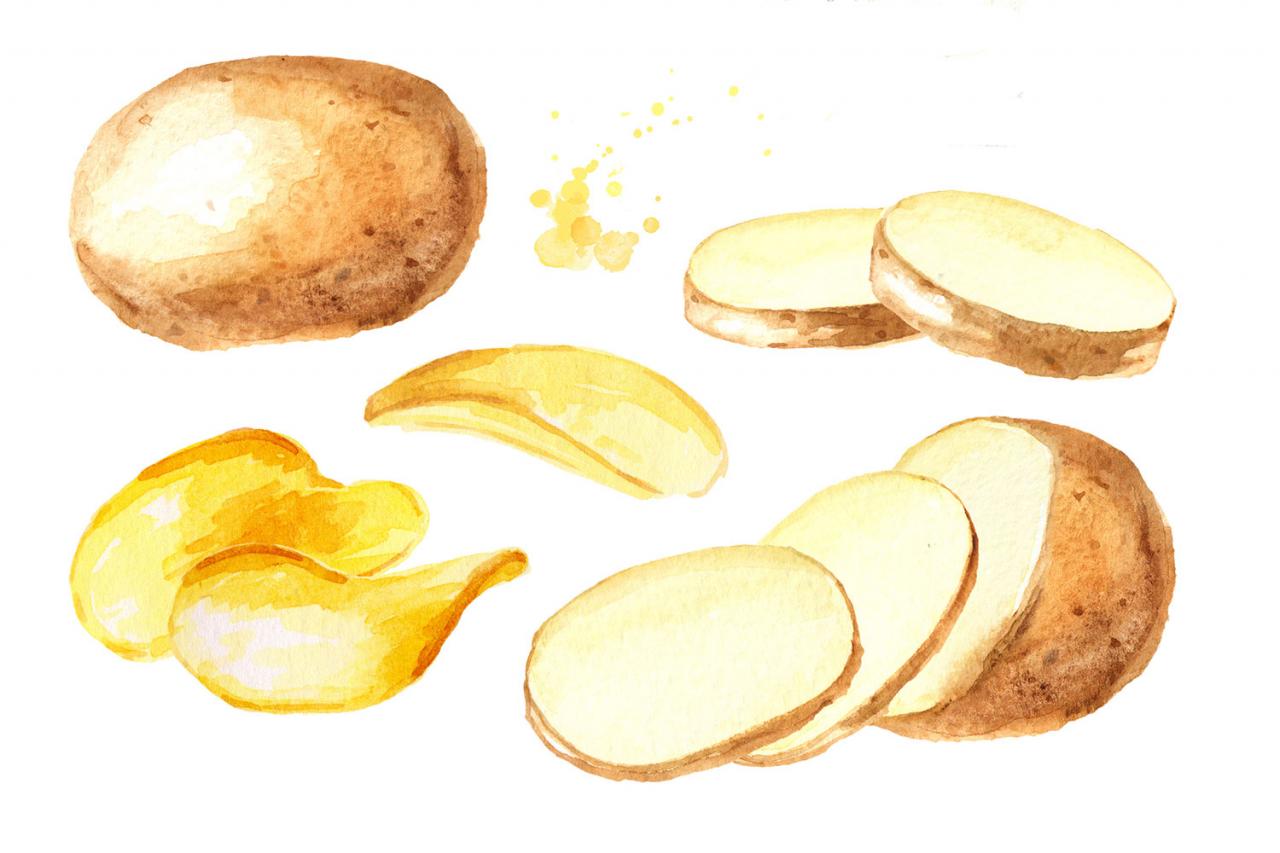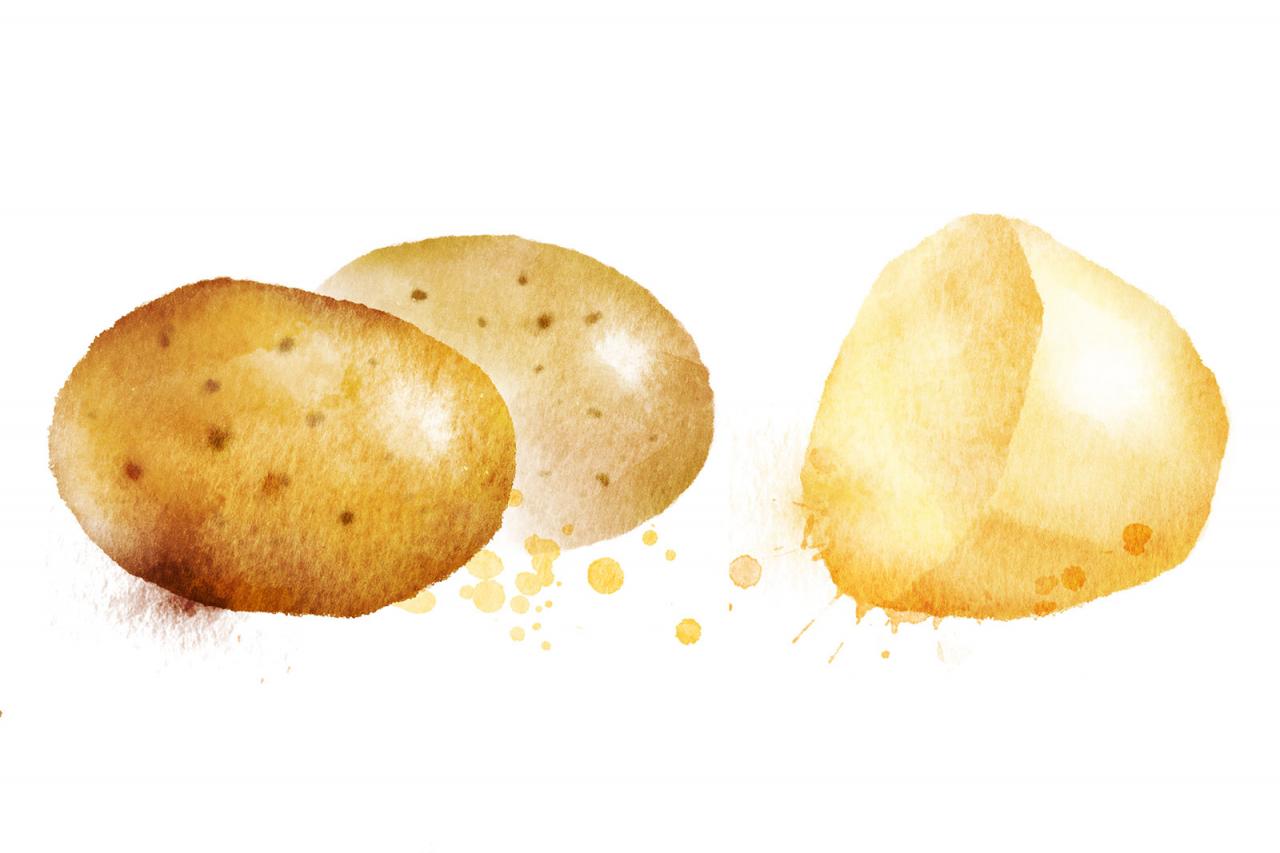
According to the nutritional recommendations of the Ministry of Health , the daily allowance is 250 g of potatoes per day – however, it is often believed that this vegetable should be completely excluded from proper nutrition.
Is this really so – and how to lower the glycemic index of potatoes by 43%?
Potatoes – composition and calorie content
Potatoes are a plant of the nightshade family, a close relative of tomatoes and eggplants. The homeland is considered to be South America and the territory of modern Bolivia, where it was used for food 10 thousand years ago. The Russian name refers to the German Kartoffel, which, in turn, comes from the word “truffle”.
Due to their low fat content, potatoes have long been considered a low-calorie diet food (73 kcal per 100 g). About 75% of its composition (raw) is water, 15-20% is starch and carbohydrates, and protein, fats, sugar and fiber in total account for no more than 5
Content of vitamins and minerals (in 170 g – medium-sized potato) ²:
- vitamin C – 28% of the daily value
- vitamin B6 – 27% of the norm
- potassium – 26%
- manganese – 19%
- magnesium – 12%
- phosphorus – 12%
- niacin – 12%
- folic acid – 12%
Beneficial features
The conversation about the benefits and dangers of potatoes comes down to what exactly to compare it with. The traditional position is that it is a source of carbohydrates and is able to cover the body’s energy needs – moreover, being an inexpensive and accessible product.
On the other hand, a lot depends on the method of preparation and the amount of use. Potatoes fried in oil (including french fries and potato starch chips) contain excessive amounts of fat and salt, and their calories are 5 times higher than boiled ones and reach 350 kcal per 100 g.
Glycemic index

In fact, up to 70-80% of dry matter in potatoes is starch. This is a type of complex carbohydrate that breaks down during digestion to glucose – however, the rate of absorption (and, therefore, the glycemic index) depends on the method of preparation.
Resistant starch
Another condition that affects the rate of absorption of carbohydrates is the temperature of the finished dish.
In the process of cooling, the starch contained in the potato changes its properties, turning into a resistant – difficult to digest substance with a lower GI.
Studies show that eating resistant starch has a positive effect on gut health (it nourishes good bacteria), lowers blood cholesterol, improves insulin sensitivity, and even inhibits the development of some forms of cancer 4 .
Potatoes for diabetics

First of all, remember that the glycemic index figure is always calculated for a serving of food containing 50 g of carbohydrates. Since 100 g of potatoes contain about 15-17 g of carbohydrates, we are talking about a 300 g serving – two medium potatoes.
Cooling boiled potatoes, in turn, lowers the glycemic index by 28% – and the addition of vinegar to the finished dish lowers the GI even more (by 43% in total compared to hot without vinegar) 5 .
Standards and guidelines
Depending on the health status of a particular person with diabetes (in particular, the presence of metabolic syndrome or obesity), to control blood sugar levels, his attending physician may advise to reduce the total consumption of carbohydrates to 20-90 g per day.
If a severe restriction of carbohydrates is not required, the use of small servings of potatoes – for example, one boiled potato, may be allowed. However, after boiling, you need to chill it in the refrigerator – and there is with the addition of a small amount of vinegar and olive oil (this will lower the GI even more).

